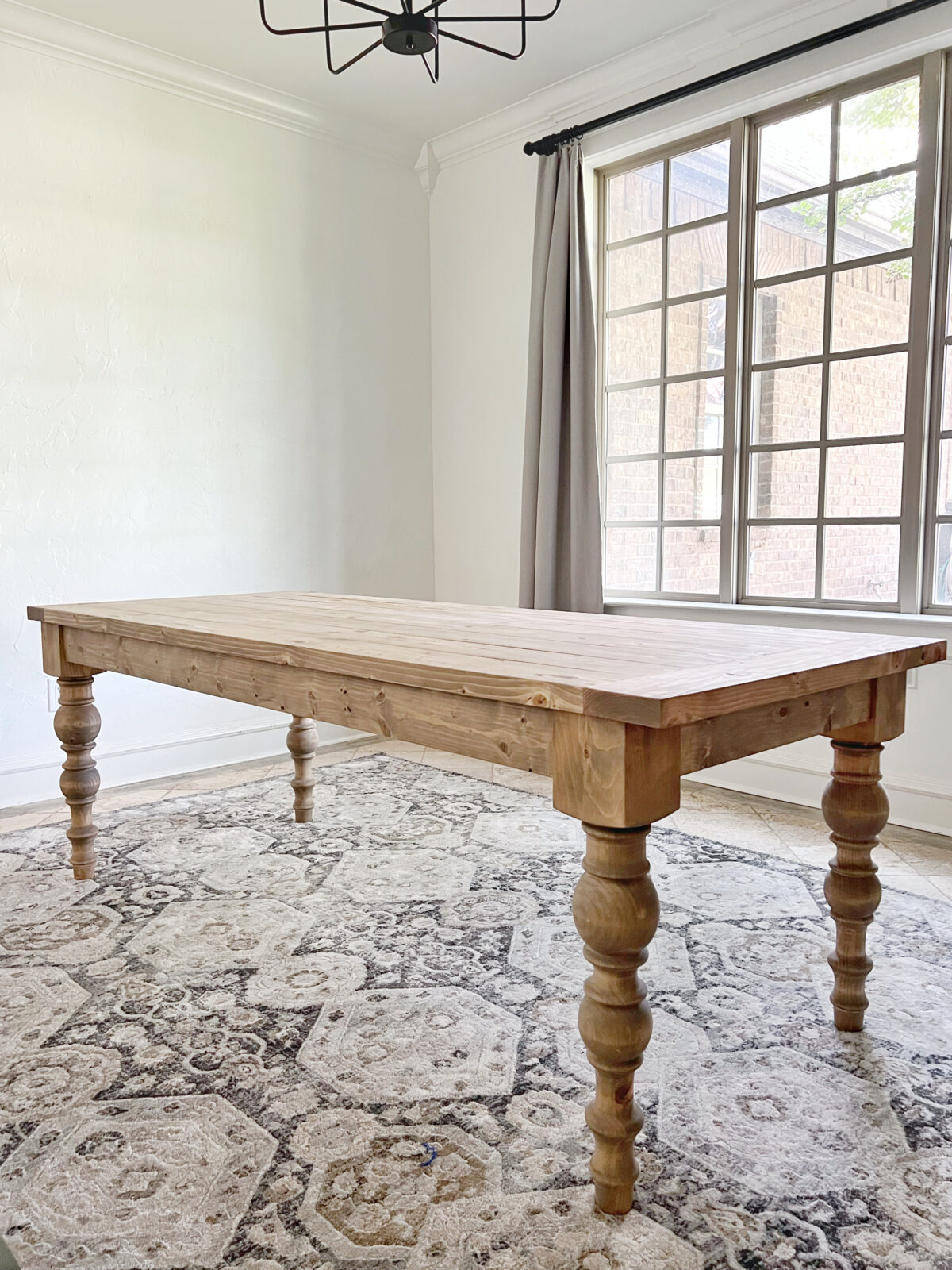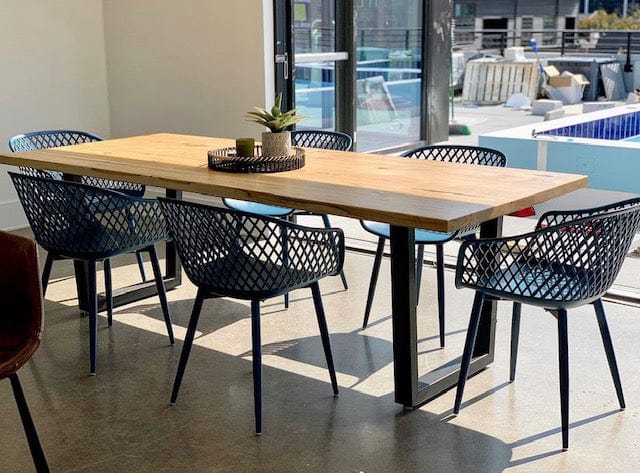Dining Room Table Legs: What to Consider Before You Acquire
Wiki Article
Choosing the Perfect Eating Table: What Styles Job Best for Your Home?
Picking the ideal dining table for your home can be a nuanced procedure that stabilizes aesthetic appeals and functionality. To navigate these options successfully and discover a table that truly matches your home, consider the following elements in information.Evaluating Your Space
Evaluating the dimensions and design of your dining location is a critical very first step in picking the ideal table. Begin by determining the length and size of the area, making up doorways, windows, and various other building attributes that can influence table positioning. This guarantees that your table not just fits but likewise enables comfortable movement around it.Think about the variety of individuals you commonly entertain. A table ought to accommodate your household's day-to-day demands while offering sufficient versatility for periodic guests. Generally of thumb, assign a minimum of 24 inches of table width each to make certain a comfy dining experience.
It's also necessary to keep appropriate clearance around the table. Ideally, there ought to be at least 36 inches in between the table side and walls or other furnishings, enabling simple accessibility and movement. For rooms where chairs with arms or added storage space systems like buffets are entailed, boosting this clearance to 48 inches is recommended.
Lighting and ambience play substantial roles as well. Make certain that your table lines up with existing lighting fixtures or plan for sufficient lighting remedies. This thorough spatial assessment guarantees that your eating table not just fits physically however also integrates with your space's overall capability and aesthetic.
Popular Table Styles

Traditional table typically include elaborate details, curved legs, and abundant wood coatings, stimulating a sense of ageless style. They are ideal for homes with classic style or those looking to include a touch of class to their dining area.
Modern eating tables prioritize simplicity and clean lines, frequently incorporating products like glass and metal. These tables are optimal for contemporary areas, providing a sleek and clean appearance that matches minimalist style approaches.
Rustic eating tables, on the various other hand, highlight all-natural materials and a handcrafted appearance - dining room table legs. They commonly feature recovered timber and a troubled coating, producing a warm and inviting ambience. These tables function well in farmhouse-style homes or those looking for a comfortable, natural feel
Industrial dining tables combine basic materials such as metal and timber, commonly showcasing a practical visual. This style is fit for loft spaces or metropolitan rooms, including a touch of tough beauty and sturdiness to the dining experience.
Each design uses distinct advantages, making it vital to select one that aligns with your home's general style and your personal choices.
Material Selections
When choosing an eating table, the choice of material plays a vital role in figuring out both the table's visual appeals and performance. Timber, steel, glass, and composite materials each deal one-of-a-kind advantages and difficulties, making it important to line up the product with your home's decor and way of living requirements.Wood is a classic and functional option, available in ranges such as oak, sites walnut, and mahogany. Understood for its durability and warmth, wood enhances both standard and contemporary insides. However, it calls for routine upkeep to stop scrapes and warping.
Metal tables, typically crafted from stainless steel, aluminum, or functioned iron, are praised for their modern charm and toughness. They are particularly suited for industrial or minimal setups however can be prone to dents and may really feel cold to the touch.
Glass table bring an air of sophistication and openness, perfect for smaller sized areas as they create an illusion of more area. While easy to clean, glass can be susceptible to smudges and needs mindful handling to stay clear of chips and splits.
Composite materials, such as MDF and plywood, deal cost-effective and customizable remedies, though they might lack the durability of all-natural products. Selecting the best product ensures your eating table is both a practical property and an aesthetic pleasure.
Sizes And Shape Considerations
After figuring out the suitable product for your eating table, the next consideration is selecting the right shape and dimension to fit your space. The form of the table dramatically affects the room's visual and capability. Rectangle-shaped tables, the most typical form, are optimal for bigger areas and can fit a greater variety of guests. They also permit for an extra official dining experience. Alternatively, round tables foster a feeling of affection and are outstanding for smaller Recommended Reading sized dining locations, encouraging discussion by getting rid of corners and making everyone really feel similarly included.Dimension is just as essential and need to be dictated by both the area's measurements and the variety of individuals you intend to seat consistently. As a policy of thumb, allocate at the very least 24 inches of table size per individual to make sure comfy dining. Additionally, take into consideration the table's clearance area: there should be at the very least 36 inches between the table edge and the wall surfaces or other furniture. This ensures that diners can move quickly without really feeling confined. Prolonging tables provide flexibility if you frequently hold larger celebrations, giving extra seats when required without occupying added space daily. Selecting the ideal sizes and shape guarantees both usefulness and visual harmony in your eating area.
Matching Your Decoration
Picking a dining table that harmonizes with your existing style is critical in producing a natural and welcoming space. Begin by assessing your present interior design style, whether it be contemporary, typical, rustic, or diverse. The table need to match the total visual, not compete with it. A streamlined, minimalist table with tidy lines is excellent for a contemporary home, while a vintage, elaborate table matches an extra standard setup.
If your design features cozy tones and natural products, take into consideration a wood table to enhance the natural feeling. Conversely, a glass or metal table may be more ideal in a room dominated by cool colors and industrial aspects.
A rough-hewn, reclaimed timber table can add character to a rustic room, while a polished marble surface area can raise a lavish dining location. A well-matched eating table not just enhances aesthetic appeal however also check this site out enriches the total dining experience.

Final Thought
Picking the ideal eating table demands cautious factor to consider of space, design, materials, form, and size. Traditional tables complement classic insides with abundant wood surfaces, while modern tables fit modern setups through glass and metal.Report this wiki page